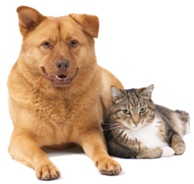 Collecting a sample for DNA from your pet is easy. Your pet’s DNA is found in every cell of its body. We offer several easy options here for sample collection. Samples should be mailed directly to Perpetua. Always include a completed Sample Information Form, including the name of your pet, with your sample. Click here to download the Sample Information Form.
Collecting a sample for DNA from your pet is easy. Your pet’s DNA is found in every cell of its body. We offer several easy options here for sample collection. Samples should be mailed directly to Perpetua. Always include a completed Sample Information Form, including the name of your pet, with your sample. Click here to download the Sample Information Form.
We strongly suggest using a shipping method with tracking and delivery confirmation to ensure your sample arrives safely. Please note: Understandably, we cannot be responsible for samples lost enroute.
Click here for DNA collection instructions for pets who have passed on.
Collecting DNA from Cats and Dogs
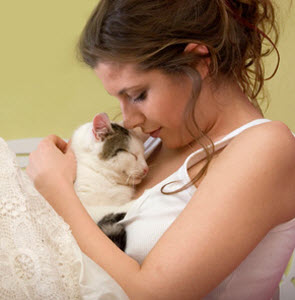
Blood Sample
Your veterinarian can assist you in collecting a 1ml sample (approx. ¼ teaspoon). Ask your veterinarian to use a standard lavender top blood collection vial.
Place the vial in a protective container such as pill vial or small box.Use a padded envelope or box for shipping. US Priority Mail service provides a free videocassette-size box and 2-day shipping from most US locations. No refrigeration is required if sent within a few days. We are not in the office to receive samples on the weekend so consider mailing early in the week; meanwhile refrigerate the sample. Do not freeze.
Hair Sample
Clipped or shed hairs contain very small amounts of DNA. Many clients add a larger DNA sample (such as a cheek swab) from another pet or person.
Seal just a few tufts of hair in a ziplock bag, and label each by writing your name on a piece of tape and adhering it to the outside of each bag before mailing.
Cheek Swab
A cheek swab (gently brushing the inside of the cheek with a soft brush) is an easy and popular way to collect DNA from a cat or dog.
Perpetua sends a swab (soft brush) with all prepaid orders. If you don’t want to wait for the swab to be mailed you can use a new unused child-size toothbrush or several cotton-tipped swabs instead.
Instructions:
**IMPORTANT: Avoid taking the sample immediately after your pet has eaten.
- Label the swab packet, open it and remove the swab.
- Gently pull your pet’s cheek away from the teeth and insert the swab brush into the cheek pouch, with the bristles pressed out against the inner cheek (pulling gently away from the teeth).
- Gently brush up and down for at least 30 seconds. If your companion gets impatient, switch sides or take a break and try again later.
- Let the brush air dry for about 30 minutes, then place back in the packet and into the mailing envelope. The brush should be kept dry; DO NOT put the swab in a plastic bag or airtight container.
- If sampling more than one pet make sure to use a separate swab for each pet, label the packet with the pet’s name, and wash your hands in between. If submitting a cheek swab from yourself, please label the packet with your name.
- Complete the order form and mail it along with the brush to Perpetua. The shipping addresses for US Mail and for courier services (UPS, FedEx) are on the bottom of the Sample Information Form.
Collecting DNA from Small Mammals (Ferrets, Rabbits, Rodents)
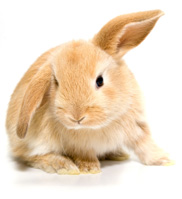 Due to their size, it is difficult to collect a good cheek swab from these small companions. Also, due to their vegetarian diet, the harder mouths of these pets don’t yield much DNA with cheek swabs.
Due to their size, it is difficult to collect a good cheek swab from these small companions. Also, due to their vegetarian diet, the harder mouths of these pets don’t yield much DNA with cheek swabs.
Blood Sample
A blood sample is the best option for a living pet, and it is not necessary to collect the full 1 ml. Have your veterinarian collect as much as you are both comfortable with. Ask your veterinarian to use a standard lavender top blood collection vial.
Hair Sample
Clipped or shed hairs contain very small amounts of DNA. You may wish to add a larger DNA sample (such as a cheek swab) from another pet or person. Seal just a few tufts of hair in a ziplock bag, and label each by writing your name on a piece of tape and adhering it to the outside of each bag before mailing.
If the pet is deceased, have your veterinarian call us for special collection instructions.
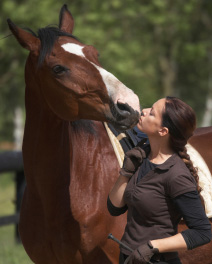
Collecting DNA from Horses and Other Hoofed Animals
Blood Sample
Your veterinarian can assist you in collecting a 1ml sample (approx. ¼ teaspoon). Ask your veterinarian to use a standard lavender top blood collection vial. Place the vial in a protective container such as pill vial or small box.Use a padded envelope or box for shipping. US Priority Mail service provides a free video-cassette box and 2-day shipping from most US locations. No refrigeration is required if sent within a few days. We are not in the office to receive samples on the weekend so consider mailing early in the week; meanwhile refrigerate the sample. Do not freeze.
Mane or Tail Hair Sample
Plucked mane and tail hairs with the hair root material intact are an excellent source of DNA. Wrap a few hairs around your finger and pull slowly and steadily (a quick tug may break the hairs at the base). You should see a little hook-like projection at the end of each strand. Experience suggests that this process is easier if the horse is warm from exercise. Gather about 10 hairs into a bunch, secure with tape, and place in an envelope or ziplock bag. Be sure to label the bag with your name written on a piece of tape.

DNA Collection For Birds, Fish and Reptiles
Our feathered and scaled friends have DNA in all their blood cells, so Zoogen only needs a drop of blood.
Blood can be spotted on an ordinary piece of paper, allowed to dry, and enclosed in a paper envelope.
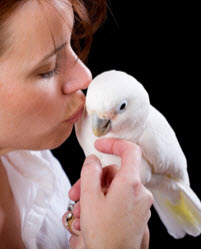
Feather Sample
Molted feathers contain very small amounts of DNA. You may wish to add a larger DNA sample (such as a cheek swab) from another pet or person.
Seal just a few feathers in a ziplock bag, and then label by writing your name on a piece of tape and adhering it to the outside of the bag.
